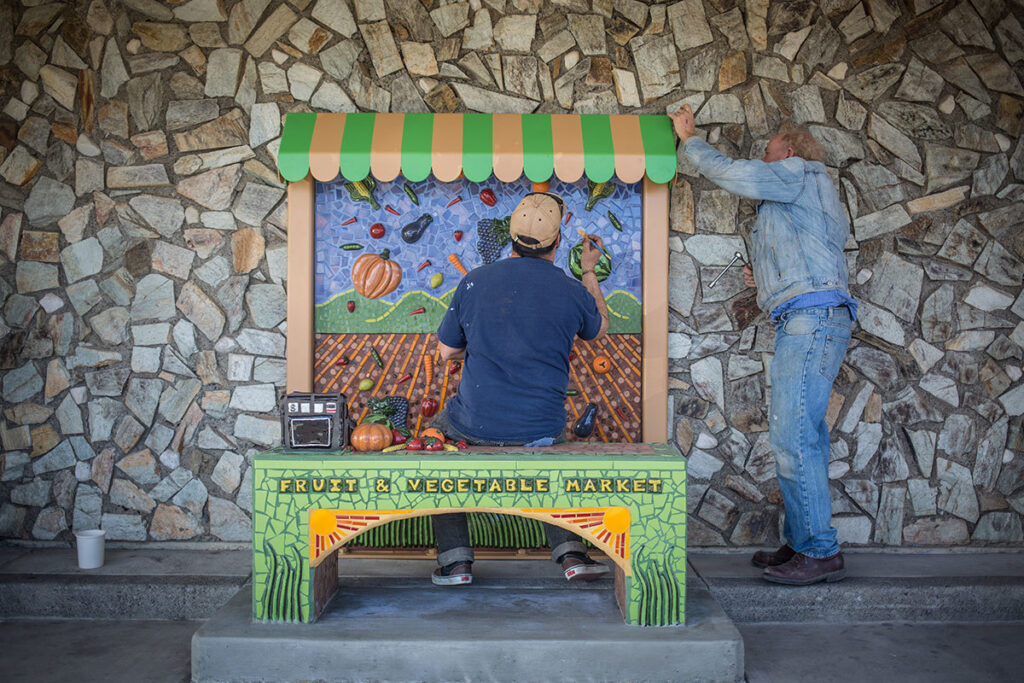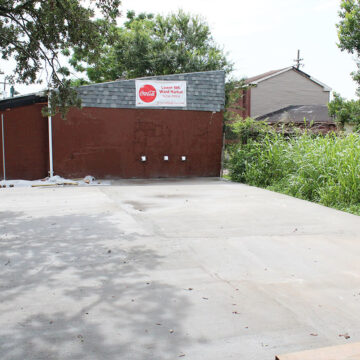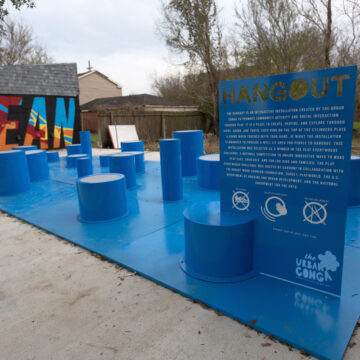Urban commercial spaces—from grocery stores and laundromats to banks, convenience stores, barber shops and salons—are often destinations of necessity for families. These are the places parents and caregivers must visit regularly to accomplish the regular chores and transactions of daily life, and where, quite often, kids are forced to wait for extended periods of time. Commercial spaces, however, offer a prime opportunity to transform the most frustrating portions of the day into playful and joyful experiences. From the interior spaces within businesses to the exterior spaces around them (not to mention larger commercial districts and corridors), the places where commercial activities occur include underutilized spaces that can be repurposed for play.

Design principles
Play in commercial spaces can be associated with either an individual business or a larger commercial district or corridor. It may occur indoors, within commercial spaces, or outdoors, where commercial properties interface with the surrounding built environment. Depending on the context, play may be supervised or unsupervised, but ideally it occurs in a place where parents and caregivers can observe and monitor kids’ play while they are completing daily chores and errands. Ideally, the adults will also join in on the play.
Individual businesses with indoor spaces
Play Everywhere installations are best suited for locations that families visit often and regularly, such as grocery stores and supermarkets, banks, and other stores and services catering to daily needs. Other commercial spaces that could benefit from Play Everywhere ;installations include: laundromats, barber shops and salons and medical offices. The playspaces can be any size, and will go a long way towards making kids and families feel welcomed. Opportunities for indoor commercial playspaces include:
- Housing a small play installation within small businesses. For example, in a laundromat, within sight of the washers and dryers.
- Creating larger, potentially-supervised playspaces within larger businesses, such as big-box stores, supermarkets or larger restaurants. In larger businesses, play is likely to occur away from adults and caregivers are at a given time. For example, IKEA stores are known for their supervised playspaces, where kids can play while adults roam the store. This model could be applied to a range of large businesses.
- Turning office lobbies and waiting areas into playspaces. Already common practice in many pediatricians’ offices, this idea could be extended to a wide variety of office settings where adults spend time for their own needs, but may have to bring kids along.
- Incorporating dedicated kids’ playspaces within restaurants, so that kids can play nearby while adults enjoy a leisurely dinner. While only a small subset of restaurants in the United States offer such spaces, it is a more common practice in other countries such as Argentina, where many neighborhood restaurants offer supervised playspaces.
Individual businesses with outdoor spaces
Play installations do not need to be inside the business. A playspace can be located in a repurposed outdoor space in the immediate vicinity of a commercial space, such as on the sidewalk or adjacent to the building. For example:
- Locate a play installation on the sidewalk in front of a business. When such a space is visible through windows from the commercial space, adults may feel comfortable letting kids play while tending to business indoors.
- Repurpose other underutilized outdoor spaces adjacent to a business, such as front setback areas, side yards, adjacent plazas or open spaces or the spaces within or next to parking lots. This creates playful experiences on exterior commercial property.
- Incorporate playful experiences into storefront display windows. For example, keep model trains running after the holidays. Window displays can inspire game-playing and imaginative play throughout the year.
-

Before the installation, this lot sat empty
-

Using space next to the Lower 9th Ward Market in New Orleans, LA, The Urban Conga developed an interactive installation exploring sight, sound, and touch
Using space next to the Lower 9th Ward Market in New Orleans, LA, The Urban Conga developed an interactive installation exploring sight, sound, and touch
Commercial districts and corridors
In areas where commercial uses tend to cluster, there are opportunities to scale and replicate Play Everywhere across a larger geographic area to foster synergies among multiple businesses. Such opportunities include:
- Partnering with property managers, business improvement districts, main streets organizations and other organizations representing commercial businesses and property owners to foster playful commercial districts and corridors by encouraging Play Everywhere in commercial spaces.
- Engaging with businesses and property owners to animate commercial plazas and other privately-owned public spaces with play installations.
- Work with commercial property owners to establish regular playful programming in commercial spaces, such as pop-up play installations or other events that encourage play— for example a “game night in the plaza.”
General considerations
- Identify and document businesses and commercial spaces that are complementary to Play Everywhere. Activities that require long periods of waiting or downtime for kids, such as grocery shopping, or businesses that already attract large numbers of families, are prime locations for playspaces.
- Inventory underutilized outdoor spaces associated with commercial uses, particularly those that are proximate to and visible from adjacent complementary uses.
- Research and highlight the potential benefits of kid- and play-friendly environments as they relate to the business strategies of individual businesses and larger commercial areas.
- Collaborate with large-scale commercial organizations, such as property management companies, business improvement districts, main street organizations, commercial franchises (or other businesses with multiple locations) or other neighborhood or business organizations, to scale and replicate Play Everywhere across an entire commercial district, along a commercial corridor, or at multiple commercial properties throughout the city.
